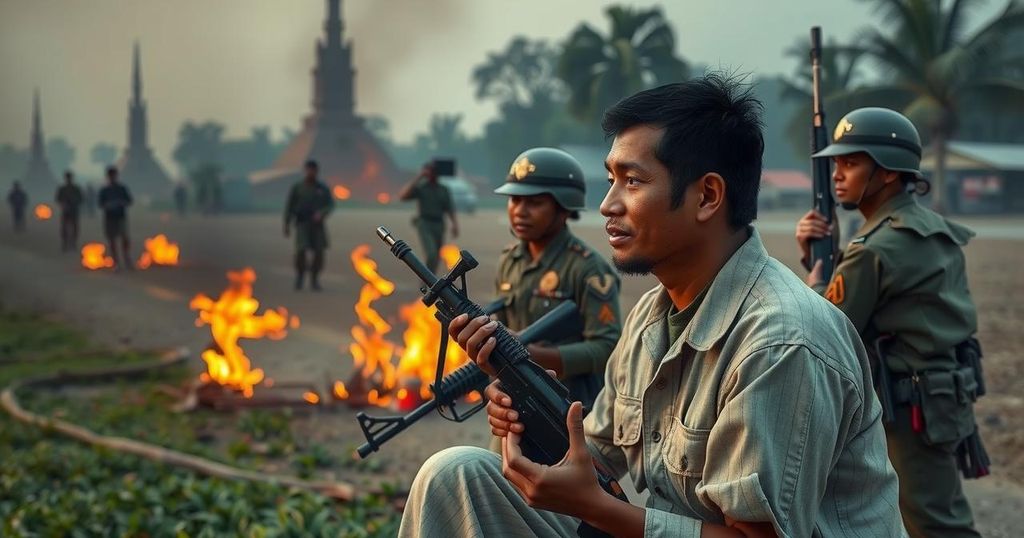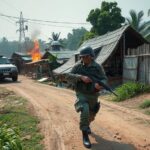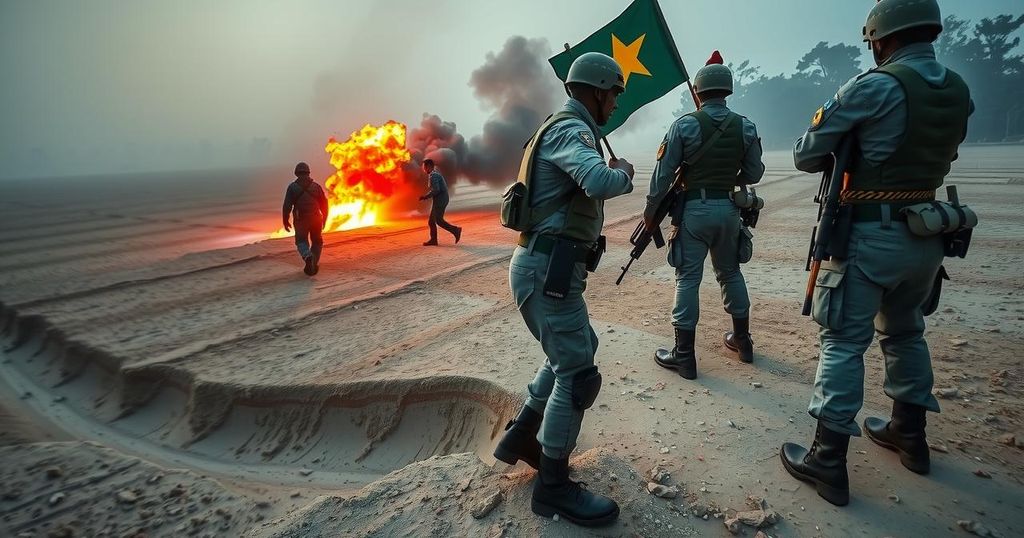Myanmar’s Civil War: A Path Toward Stalemate Rather Than Regime Change
Myanmar’s civil conflict has intensified following the 2021 military coup, with ethnic armies making significant territorial gains and local resistance forces escalating their efforts. Despite claims of a potential collapse of Myanmar’s military, the situation may be heading toward a stalemate rather than regime change, as ethnic groups pursue their own agendas for governance instead of national democracy.
The internal conflict in Myanmar, intensified by the military coup in February 2021, has experienced significant transformations over the past year. Ethnic armies in the northeastern region, particularly in Shan State, have achieved substantial territorial gains following a vigorous offensive initiated in October 2023. Likewise, numerous local People’s Defense Forces (PDFs), aligned with the exiled National Unity Government formed by ousted lawmakers, have intensified their resistance. This amalgamation of forces has overextended the Tatmadaw, Myanmar’s military, as it engages on multiple fronts across the country.
Despite the Tatmadaw’s historical dominance since the country’s independence in 1948, the narrative suggesting its imminent collapse due to the mounting pressure from anti-coup forces, particularly in the central region of Anyar, may be exaggerated. The non-state ethnic armed groups involved, including the Brotherhood Alliance—comprising the Ta’ang National Liberation Army (TNLA), the Myanmar National Democratic Alliance Army (MNDAA), and the Arakan Army—while cooperating with the PDFs to dethrone the junta, seek to secure their own ethnic self-governance rather than advocate for a cohesive national democracy. Thus, the potential for a decisive victory remains uncertain, with a stalemate more plausible as the conflict evolves.
Myanmar has been embroiled in civil unrest since the military coup in February 2021, which ousted the democratically elected government led by Aung San Suu Kyi’s National League for Democracy (NLD). Ethnic armed groups in Myanmar, historically engaged in struggles for autonomy and power, have escalated their activities, capturing territory and forming alliances with newly organized resistance forces. The ongoing conflict has created a complex landscape where traditional military operations intersect with localized insurgencies, complicating efforts for resolution and stability in the region.
In summary, the ongoing conflict in Myanmar, while marked by significant territorial and operational shifts, appears to be drifting towards a stalemate rather than an outright regime change. The ethnic armed groups, while aligned with the PDFs, are primarily motivated by their own quests for ethnic rights and self-governance rather than unifying the country under a single democratic framework. Consequently, while the Tatmadaw faces unprecedented pressures, expectations for its collapse may be premature, necessitating a reevaluation of the conflict’s trajectory.
Original Source: www.worldpoliticsreview.com








Post Comment